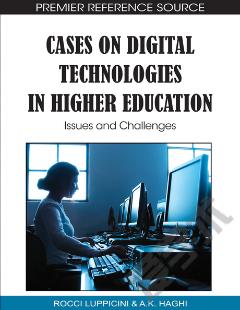Impacting the Digital Divide on a Global Scale: Case Studies of Mobile Technology Integration in Schools around the World
This book delineates strategies of mobile technology integration in local schools around the world. The pool of teacher participants consists of 93 teachers from 46 countries, including Argentina, Bolivia, Cambodia, Colombia, Costa Rica, Estonia, Guatemala, Honduras, India, Jordan, Latvia, Mali, Mongolia, Nepal, Nicaragua, Nigeria, Senegal and Venezuela. Impacting the Digital Divide shares powerful stories of educators around the world integrating real world technologies to support teaching and learning. Many of these teachers live and work in regions where resources are limited, yet they offer a perspective of innovation and engagement. Inspired by their participation in the US Department of State’s Teaching Excellence and Achievement (TEA) program, the teachers and administrators in local schools have implemented strategies using mobile technologies to support active learning environments and teacher professional development.While barriers of limited Internet availability, lack of electricity, and a paucity of digital devices in schools are certainly present in the TEA educators’ experiences, they have found ways to maximize use and productivity by employing digital mobile devices (most often, cell phones). Access to mobile phones for teachers, school administrators, parents and even students continues to increase in most countries, and the ingenuity and determination of these educators challenges those passionate about meaningful learning to energetically harness these tools for optimal educational experiences. Impacting the Digital Divide provides honest examples of educators around the world bridging technological inequities in order to better prepare students for the digital age.
{{comment.content}}








 京公网安备 11010802027623号
京公网安备 11010802027623号